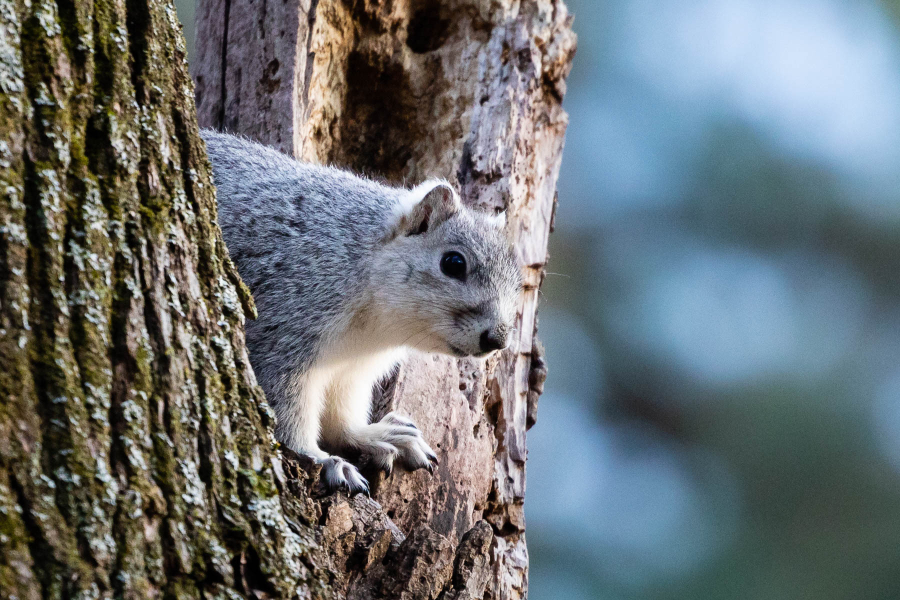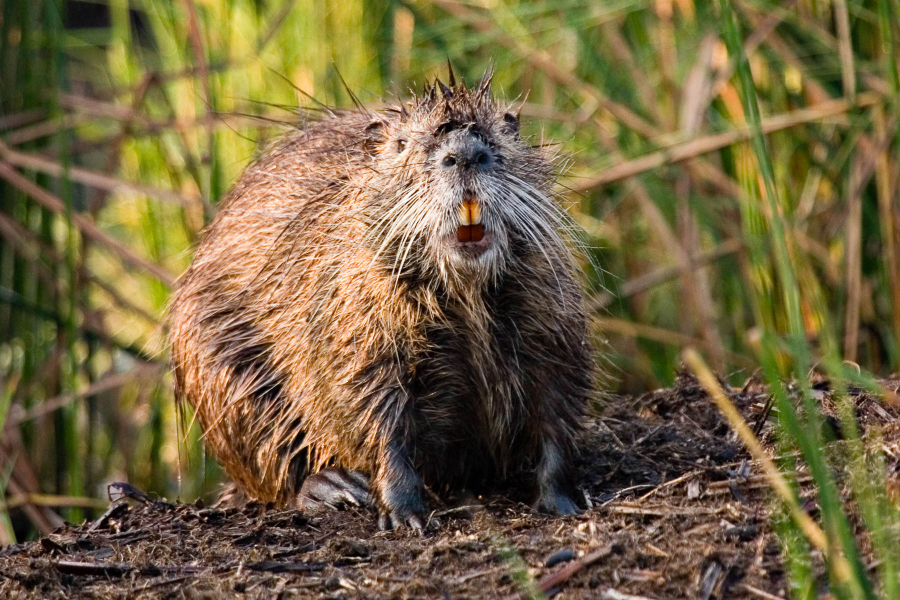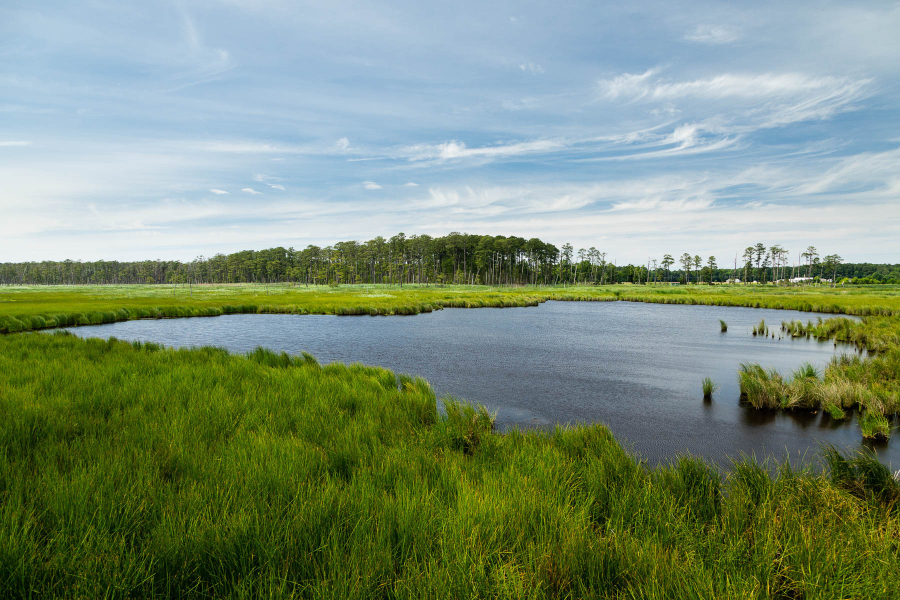A federal agency recounts two big wins in Chesapeake wildlife conservation
The U.S. Fish and Wildlife Service plays a major role in the protection of the region’s critters

When it comes to the protection and conservation of wildlife, there is no better feeling than seeing an endangered species recovered or a disruptive invasive eradicated. In the Chesapeake Bay region, the U.S. Fish & Wildlife Service (USFWS) has had the pleasure of achieving both. For nearly 40 years, we’ve been partners with the Chesapeake Bay Program (though we’ve worked in the region for far longer) and during that time we’ve supported the partnership’s goals related to wildlife protection. There are two long-term initiatives that stand out as major accomplishments as a result of our participation in the Chesapeake Bay Program partnership—and that is the recovery of the Delmarva fox squirrel and the eradication of the invasive nutria.
Bringing back a Chesapeake native
The Delmarva Peninsula fox squirrel (commonly known as the Delmarva fox squirrel) ranged throughout the Delmarva Peninsula before experiencing a sharp decline in the mid-20th century due to forest clearing for agriculture and development, short-rotation timber harvest and overhunting. It was determined to be endangered in 1967, listed as federally endangered under the Endangered Species Act of 1973 and was officially deemed recovered in 2015.
Starting as early as 1979, the USFWS began working with states and private landowners to support the species recovery. Efforts included relocating animals to areas with better habitat, shortening hunting seasons in targeted areas and protecting large, forested areas where the species can grow their population.
Delmarva landowners and residents played a major role in the recovery of this species. More than 80% of this squirrel’s habitat exists on private land, and many private landowners hosted new populations of squirrels on their farms or forests. Hunters, foresters and other residents living in the region helped us identify new populations of the critter that we could focus on protecting.
As these efforts advanced, the species expanded across the working landscapes of the Delmarva Peninsula with little disruption to farmers and foresters. The private landowners were able to continue with routine timber harvest and farming while providing sufficient mature forest to support the squirrels.
By 2015, the squirrel’s range had increased from four to 10 counties on the Delmarva Peninsula—eight on Maryland’s Eastern Shore, Sussex County in Delaware and Accomack County in Virginia (where Chincoteague National Wildlife Refuge is located). The squirrel’s range now covers roughly 28% of the Delmarva Peninsula.
Getting Rid of an Invasive Rodent

After 20 years of work, the Chesapeake Bay region can finally bid goodbye and good riddance to the exotic, invasive nutria — who for years has wreaked havoc on marsh landscapes. In September 2022, the Chesapeake Bay Nutria Eradication Project (CBNEP) announced that nutria would no longer be found in Maryland’s marshes.
Nutria and their destructive feeding habits have destroyed thousands of acres of marshes since the 1940s when they were introduced to Maryland’s portion of the Delmarva Peninsula from South America for the fur market. Maryland’s Blackwater National Wildlife Refuge has seen some of the worst of this destruction, losing over 5,000 acres of wetlands due to the combined siege of nutria impacts, sea-level rise and land subsidence.
In 2004, the total annual economic, environmental and social services losses due to nutria damage were estimated at $5.8 million with projections to drastically increase if the nutria problem was not addressed. In response, the USFWS along with U.S. Department of Agriculture’s Wildlife Services and Maryland Department of Natural Resources formed the CBNEP, which worked closely with private landowners and other public partners to eradicate the species.
Half of the 14,000 nutria removed during the project were from private lands, thanks to over 700 participating landowners who allowed biologists to come onto their property and look for, trap, remove and monitor nutria. Ultimately, the removal of these invasive species protected over 250,000 acres of marshes on the Delmarva Peninsula. The project was the first of its kind — attempting to eradicate an aquatic mammal from a non-island locale.

To detect and remove the rodents, wildlife biologists relied on traditional survey methods as well as newer approaches, such as using trained “detector dogs” to locate nutria. These methods were applied by dedicated individuals to continually reduce the population of nutria. Due to this hard work, partnership and perseverance, the destructive nutria is no longer damaging and destroying the marshes of Delmarva Peninsula.
In 2015, the project hit an inflection point, when the last known Maryland nutria was captured.
Since then, CBNEP has monitored and revisited historic nutria areas to ensure eradication through statistical monitoring. The team has moved into a scaled-down phase to respond to any reported sightings and assist other states, like Virginia, who may be experiencing increases in nutria that could potentially reinvade the Delmarva Peninsula if not controlled.
The removal of nutria reinforces other ongoing efforts to bolster marsh resilience in the Chesapeake. A combination of sea level rise and historic ditching and diking efforts used for pest control and agriculture have resulted in acres of marsh turning into open water. Managers have also been placing native plants, depositing thin-layer sediment, and restoring hydrology to help enhance marshes so that the landscape can keep up with climate change. These resiliency efforts would not be possible if nutria remained on the Delmarva Peninsula.
Additional wildlife management in the Chesapeake
The USFWS continues to work with other Chesapeake Bay Program partners on many efforts to support the region’s species. Current projects include the restoration of wildlife habitat for such iconic Bay species as the American black duck and Eastern brook trout, helping to remove blockages in waterways so that fish can freely swim, conserving urban wildlife habitats and assisting landowners with restoring wetlands on their property.

Comments
There are no comments.
Thank you!
Your comment has been received. Before it can be published, the comment will be reviewed by our team to ensure it adheres with our rules of engagement.
Back to recent stories